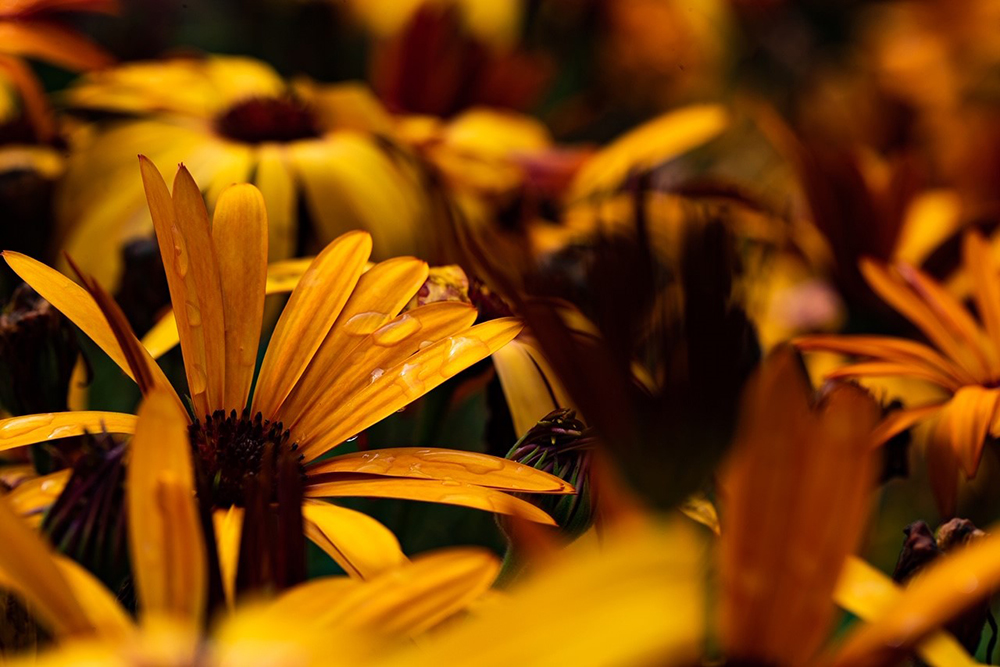- 5 Locations to Photograph in Victoria
-

From Melbourne city to the beaches of Mornington Peninsula and out to the mountains, Victoria has a stack of incredible places to photograph. Check out some of Melbourne-based Canon Photographer Jay Collier's favourite spots to shoot in the state.
A visit to Cape Schanck on the Mornington Peninsula is sure to please any photographer, with the rugged coast line of volcanic rock, thundering waves and rock pools. A must-visit location, it’s best explored on the outgoing low tide when you can access the exposed rock shelves in safety. When the tide returns it’s best to not venture too far, but the pebble beach makes for some spectacular images and video footage as the waves rush in and out over the smooth pebbles, creating a haunting tinkling sound that reverberates off the sheer cliff walls.
Shot on Canon EOS 5D Mark IV, Shutter Speed: 1 second, ISO 100, Aperture: f11
Photo tip:
• Be sure to take along a Neutral Density filter to slow things down for some dramatic seascape images.
This is a great place for bird and nature photographers – and best of all it’s free! Serendip has a large open park with wetlands that include photo hides, as well as walk-through aviaries containing many native Australian birds. It’s a great place to practice photographing birds in flight, and also observe the natural behaviour of a wide array of native birdlife.
Shot on Canon EOS 1DX Mark II, Shutter Speed: 1/2000th sec, ISO: 320, Aperture: f5.6
Photo tips:
• Be sure to pack long zoom lenses and teleconverters.
• It’s best visited in the early morning for better light.
• For birds in flight, try settings such as TV Mode or Auto ISO and shutter speeds from 1/1600th to 1/3200th to capture fast action.
Don’t forget the surfing mecca Bells Beach, where you can capture lots of surf action. It’s also a great location to shoot sunrise and surf culture images. Depending on the swell and tide, you may need a fairly long lens – such as the EF 100-400mm lens or longer – to get the best images from the shore. At low tide you can walk out onto the exposed rock shelf and get much closer the iconic break at Bells Beach; however as the tide comes in you’ll need to retreat to the safety of the main beach or the break next door at Winkie Beach.
Shot on Canon EOS 1DX Mark II, Shutter Speed: 1/1600th, ISO: 400, Aperture: f16
Photo tips:
• Try a variety of fast shutter speeds between 1/1000th to 1/4000th for clear, sharp, action images.
• Try slower speeds to allow for some motion in the waves, or even very slow motion panning shots – anywhere from 1/5th to 1/30th – for more abstract results.
The Royal Botanic Gardens in Melbourne is a beautiful, photogenic spot to hit for an early morning or late afternoon visit. Entering at any gate, you’ll immediately find any number of things to point your lens at – from stunning flowers to the city backdrop over the main lake.

Photo tip:
• Make sure you take along a Macro or a Wide Angle lens for your trip, to capture those fine details and the overall beauty of the Gardens.
When I get up to the top of the mountains in Victoria at a place called Kalorama, I recall some of my earliest memories with my camera, hiking around those mountains. Start at the bottom of the hills in Belgrave – which the Puffing Billy Railway rolls through – then venture up through Olinda. You’ll find nothing but scenic spots to shoot from, and if you dive deep enough into the forest you’ll come across wide open views of the city that are a perfect place to shoot the sunset.
Shot on Canon EOS 5D Mark II with EF 24-70mm lens, Shutter Speed: 1/250th, ISO: 125, Aperture: f8
Photo tip:
• Pack your camera, a wide-angle lens, some lunch and go explore.
Learn more about long exposure photography using ND filters with this article.
Photos by Canon Photographer, Jay Collier.

Canon Photographer Jenn Cooper shares her 8 favourite locations to shoot photos and videos in New South Wales

Give your photography skills a boost with these practical tips from the Canon community.

Lifestyle and Landscape Photographer Alex Spurway test-drives the new EOS 6D Mark II.